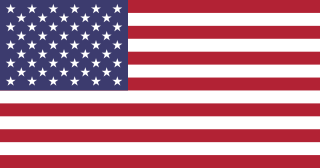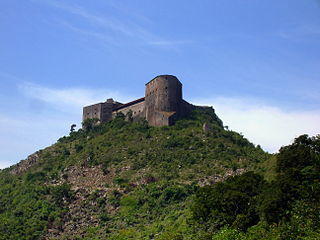 W
WThe 1989 Haitian coup d'état attempt was a bloodless military coup attempt that took place in Haiti on 1–2 April 1989, when a group of rebel army officers attempted to overthrow the military government of Lt. Gen. Prosper Avril.
 W
WThe Action of 3 February 1812 was an unusual minor naval engagement off the western coast of Haiti between a British frigate and a frigate manned by a loose coalition of Haitian rebels. The battle was fought against the background of the Napoleonic Wars and the collapse of government in Haiti in the aftermath of the Haitian Revolution eight years earlier. After the French had been expelled from Haiti in 1804, the newly independent nation was first ruled by Jean-Jacques Dessalines, who was murdered in 1806 and replaced by two of his advisors, Henri Christophe and Alexandre Pétion. These rulers divided the country between them and in the confused political situation that followed a number of minor fiefdoms appeared, including one led by Jérôme Maximilien Borgella in the south-west of the island called Sud. The small Haitian Navy defected to Borgella, who crewed the vessels with a collection of sailors from various countries, led by a notorious privateer named Gaspard.
 W
WThe Action of 28 June 1803 marked the opening shots of the Blockade of Saint-Domingue after the collapse of the Treaty of Amiens and the outbreak of the War of the Third Coalition in May 1803.
 W
WThe United States occupation of Haiti began on July 28, 1915, when 330 US Marines landed at Port-au-Prince, Haiti, on the authority of US President Woodrow Wilson. The first invasion forces had already disembarked from USS Montana on January 27, 1914. The July intervention took place following the murder of dictator President Vilbrun Guillaume Sam by insurgents angered by his political murders of elite opposition.
 W
WThe Indigenous Army, also known as the Army of Saint-Domingue, was the moniker bestowed to the coalition of anti-slavery rebels who fought in the Haitian Revolution. Encompassing both black slaves and affranchis, the rebels were not officially titled the Armée indigène until January 1803, under the leadership of then-general Jean-Jacques Dessalines. Predated by insurrectionists such as François Mackandal, Vincent Ogé and Dutty Boukman, the rebellion would become organized and consolidated under the leadership of Toussaint Louverture; succeeded by Dessalines. The now full-fledged fighting force would utilize their sheer manpower and strategic capacity to overwhelm French troops, ensuring the Haitian Revolution as the most successful of its kind.
 W
WThe Citadelle Laferrière or, Citadelle Henri Christophe, or simply the Citadelle, is a large early 19th-century fortress situated on the Bonnet à l'Evêque mountaintop in Nord, Haiti. The imposing structure is located approximately 27 kilometres (17 mi) south of the city of Cap-Haïtien, 15 kilometres (9.3 mi) southwest of the Three Bays Protected Area, and 8 kilometres (5.0 mi) uphill from the town of Milot. Commissioned by Haitian revolutionary Henri Christophe, and built by tens of thousands of former slaves, the Citadelle was the linchpin of the newly independent Haiti's defensive strategy against potential French incursion.
 W
WThe Royal Chapel of Milot is a religious establishment located in the Sans Souci Palace in Haiti.
 W
WThis article lists the commanders-in-chief of the Armed Forces of Haiti, from the end of the U.S. occupation in 1934 through the disbandment of the FAd'H in 1995, during the Operation Uphold Democracy, until the reinstatement of the FAd'H in 2017.
 W
WCrête-à-Pierrot was a gunboat in the Haitian Navy. It was destroyed by Admiral Hammerton Killick in 1902 to prevent it falling into the hands of a German warship.
 W
WThe Defence Force of Haiti was the envisaged name of the planned, reconstituted armed forces of the Republic of Haiti. Haiti had not had a regular armed forces since 1995; a process to reestablish them was initiated in 2011 and culminated in their remobilization in 2017.
 W
WThe Capture of Fort-Dauphin was a bloodless encounter of the French Revolutionary Wars on which a Spanish expedition under Gabriel de Aristizábal seized Fort-Liberté, then named Fort-Dauphin, from Revolutionary France. The French colonial garrisons, consisting of over a thousand men, surrendered without firing a single shot.
 W
WFort-Liberté is a commune and administrative capital of the Nord-Est department of Haiti. It is close to the border of the Dominican Republic and is one of the oldest cities in the country. Haiti's independence was proclaimed here on November 29, 1803.
 W
WThe Gendarmerie of Haiti, also known as the Haitian Constabulary, was a collaborationist gendarmerie raised by the United States during its occupation of Haiti in the early 20th century. Established in late 1915, the gendarmerie was operational from 1916 until 1928, during which time it was Haiti's only military force, earning a reputation for active interference in civilian government that may have set the stage for the future politicization of Haiti's armed forces.
 W
WThe June 1988 Haitian coup d'état took place on 20 June 1988, when Henri Namphy overthrew Leslie Manigat. Manigat, who won the military-controlled 1988 Haitian general election, had taken office on 7 February.
 W
WThe September 1988 Haitian coup d'état took place on 18 September 1988, when a group of non-commissioned officers in the Haitian Presidential Guard overthrew General Henri Namphy and brought General Prosper Avril to power. Namphy had been a member of the National Council of Government from 1986 until the February 1988 inauguration of Leslie Manigat, who had won the military-controlled 1988 Haitian general election. Namphy had overthrown Manigat in the June 1988 Haitian coup d'état when Manigat sought to exercise his constitutional right to control military assignments.